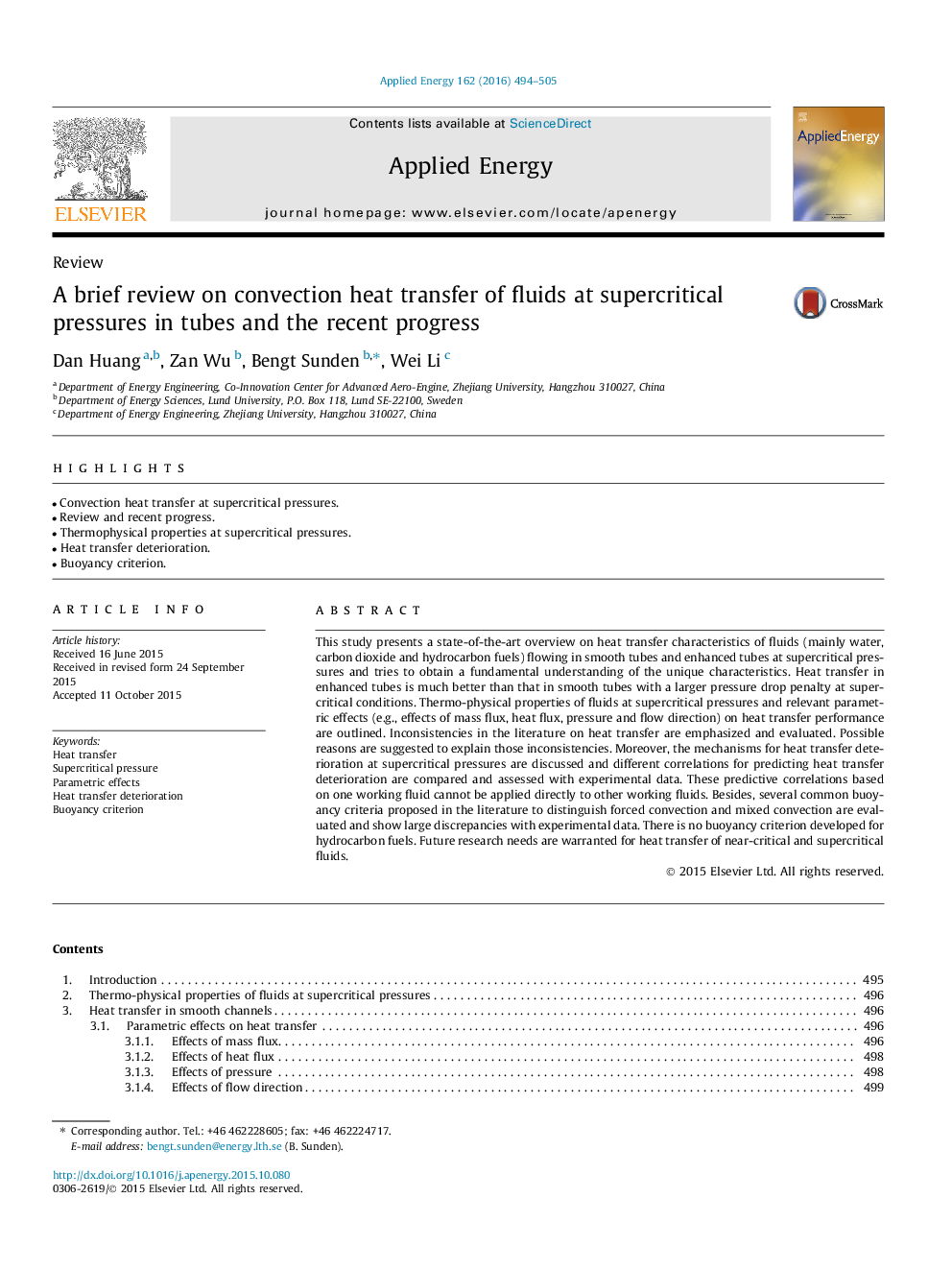| Article ID | Journal | Published Year | Pages | File Type |
|---|---|---|---|---|
| 6684721 | Applied Energy | 2016 | 12 Pages |
Abstract
This study presents a state-of-the-art overview on heat transfer characteristics of fluids (mainly water, carbon dioxide and hydrocarbon fuels) flowing in smooth tubes and enhanced tubes at supercritical pressures and tries to obtain a fundamental understanding of the unique characteristics. Heat transfer in enhanced tubes is much better than that in smooth tubes with a larger pressure drop penalty at supercritical conditions. Thermo-physical properties of fluids at supercritical pressures and relevant parametric effects (e.g., effects of mass flux, heat flux, pressure and flow direction) on heat transfer performance are outlined. Inconsistencies in the literature on heat transfer are emphasized and evaluated. Possible reasons are suggested to explain those inconsistencies. Moreover, the mechanisms for heat transfer deterioration at supercritical pressures are discussed and different correlations for predicting heat transfer deterioration are compared and assessed with experimental data. These predictive correlations based on one working fluid cannot be applied directly to other working fluids. Besides, several common buoyancy criteria proposed in the literature to distinguish forced convection and mixed convection are evaluated and show large discrepancies with experimental data. There is no buoyancy criterion developed for hydrocarbon fuels. Future research needs are warranted for heat transfer of near-critical and supercritical fluids.
Related Topics
Physical Sciences and Engineering
Energy
Energy Engineering and Power Technology
Authors
Dan Huang, Zan Wu, Bengt Sunden, Wei Li,
